-
New laser could help the military see hidden dangers
A new laser that can show what objects are made of could help military aircraft identify hidden dangers such as weapons arsenals far below. The system, which is made of off-the-shelf telecommunications technology, emits a broadband beam of infrared light. While most lasers emit light of one wavelength, or color, super-continuum lasers like this one give off a tight beam packed with columns of light covering a range of wavelengths — a blend of colors. Because this beam is in the infrared region, it’s invisible to human eyes. It can, however, illuminate deep information.
-
-
Discoveries in nanotechnology to make clean, fresh drinking water more plentiful
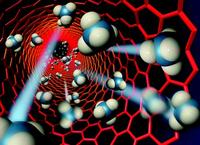
The University of Chicago and Ben-Gurion University of the Negev will begin funding a series of ambitious research collaborations that apply the latest discoveries in nanotechnology to create new materials and processes for making clean, fresh drinking water more plentiful and less expensive by 2020.
-
-
NASA seeks ideas on locating and exploring asteroids – and redirecting them away from Earth
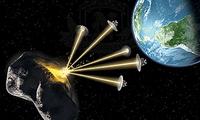
NASA also released a request for information (RFI) that invites industry and potential partners to offer ideas on accomplishing NASA’s goal to locate, redirect, and explore an asteroid, as well as find and plan for asteroid threats. The RFI is part of a broader NASA program focusing on finding all asteroid threats to human populations and knowing what to do about them.
-
-
Smart technologies tackle global food shortage
From monitoring soil moisture to measuring oyster heartbeats, Aussie farmers can help to tackle the global food shortage and significantly increase their productivity by taking advantage of new smart farming technologies enabled by next generation broadband networks.
-
-
Highly conductive textiles allow for wearable electronics

Jackets with built-in mobile phones, sports clothes that warn you when your heart rate gets too high, wallpaper with glowing patterns — these may appear like concepts from a science fiction movie, but some of them are actually already available, and they may soon become commonplace.
-
-
Improving close air support for faster, more precise airstrikes
Air-ground fire coordination — also known as Close Air Support or CAS — is a dangerous and difficult business. While its tools have become more sophisticated, CAS has not fundamentally changed since the First World War. Now, Persistent Close Air Support (PCAS) program aims to improve air-to-ground fire coordination, but could revolutionize military technology development and deployment as well.
-
-
Detecting explosives, not toothpaste
Researchers want airports, border checkpoints, and others to detect homemade explosives made with hydrogen peroxide without nabbing people whose toothpaste happens to contain peroxide. This is part of the challenge faced in developing a portable sensor to detect a common homemade explosive called a FOx (fuel/oxidizer) mixture, made by mixing hydrogen peroxide with fuels.
-
-
Making jet fuel from switchgrass

The Energy Department’s National Renewable Energy Laboratory (NREL) is partnering with Cobalt Technologies, U.S. Navy, and Show Me Energy Cooperative to demonstrate that jet fuel can be made economically and in large quantities from a renewable biomass feedstock such as switch grass. The project could spur jobs in rural America, lead to less reliance of foreign oil.
-
-
Highly sensitive polymer detects IEDs
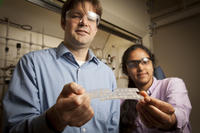
A chemical which is often the key ingredient in improvised explosive devices (IEDs) can be quickly and safely detected in trace amounts by a new polymer created by a team of Cornell University chemists. The polymer, which potentially could be used in low-cost, handheld explosive detectors and could supplement or replace bomb-sniffing dogs.
-
-
Laser-driven neutrons to detect nuclear smuggling
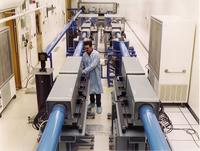
Researchers have successfully demonstrated for the first time that laser-generated neutrons can be enlisted as a useful tool in the war on terror, as Los Alamos shows first nuclear material detection by single short-pulse-laser-driven neutron source.
-
-
Students control a helicopter in flight using only brain waves
A remote controlled helicopter has been flown through a series of hoops around a college gymnasium in Minnesota. It sounds like your everyday student project; but there is one caveat: the helicopter was controlled using just the power of thought. The helicopter was controlled by a noninvasive technique called electroencephalography (EEG), which recorded the electrical activity of the students’ brains through a cap fitted with sixty-four electrodes.
-
-
Science Academies highlight role of science in meeting global challenges
Science academies from around the globe issued joint statements last week to call world leaders’ attention to the role science, technology, and innovation can play in the pursuit of sustainable development, and to raise their awareness of the emerging threat of drug resistance in infectious agents including tuberculosis. The “G-Science” statements are intended to inform government leaders attending next month’s G8 Summit and other international gatherings later this year.
-
-
Laser weapons on ships require reliable shipboard power
For the first time, a laser weapon system (LaWS) will be placed onboard a deployed ship, USS Ponce, for testing in the Persian Gulf in 2014. The U.S. Navy’s plan to put laser weapons on ships, makes the need for reliable, high-voltage shipboard power a matter of national security.
-
-
Smartphone technology to accelerate development of unattended sensors
DARPA wants to develop low-cost, rapidly updatable intelligence, surveillance, and reconnaissance (ISR) sensors – to be used by the military on the ground, in the air, at sea, and undersea – in less than a year, a marked improvement to the current three-to-eight year development process. It hopes to do so by using an original design manufacturer (ODM) process similar to that of the commercial smartphone industry.
-
-
New filtration material to make petroleum refining cheaper, more efficient
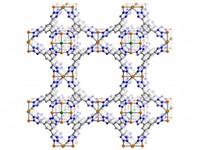
A newly synthesized material might provide a dramatically improved method for separating the highest-octane components of gasoline. The material is a metal-organic framework, or MOF, which can be imagined as a sponge with microscopic holes.
-
More headlines
The long view
New Technology is Keeping the Skies Safe
DHS S&T Baggage, Cargo, and People Screening (BCP) Program develops state-of-the-art screening solutions to help secure airspace, communities, and borders
Factories First: Winning the Drone War Before It Starts
Wars are won by factories before they are won on the battlefield,Martin C. Feldmann writes, noting that the United States lacks the manufacturing depth for the coming drone age. Rectifying this situation “will take far more than procurement tweaks,” Feldmann writes. “It demands a national-level, wartime-scale industrial mobilization.”
How Artificial General Intelligence Could Affect the Rise and Fall of Nations
Visions for potential AGI futures: A new report from RAND aims to stimulate thinking among policymakers about possible impacts of the development of artificial general intelligence (AGI) on geopolitics and the world order.
Keeping the Lights on with Nuclear Waste: Radiochemistry Transforms Nuclear Waste into Strategic Materials
How UNLV radiochemistry is pioneering the future of energy in the Southwest by salvaging strategic materials from nuclear dumps –and making it safe.
Model Predicts Long-Term Effects of Nuclear Waste on Underground Disposal Systems
The simulations matched results from an underground lab experiment in Switzerland, suggesting modeling could be used to validate the safety of nuclear disposal sites.
